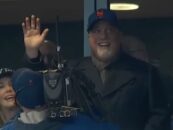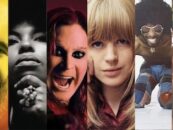 In 1957, George “Buddy” Guy left Lettsworth, La., where his family were sharecroppers on a plantation, to see if he could make a living playing the electric blues in Chicago. He’d learned some of his incendiary playing style from the local phenom Lightnin’ Slim (Otis Hicks), and by copying whatever records he could lay his hands on, including one in particular by John Lee Hooker recorded for Modern in 1948.
In 1957, George “Buddy” Guy left Lettsworth, La., where his family were sharecroppers on a plantation, to see if he could make a living playing the electric blues in Chicago. He’d learned some of his incendiary playing style from the local phenom Lightnin’ Slim (Otis Hicks), and by copying whatever records he could lay his hands on, including one in particular by John Lee Hooker recorded for Modern in 1948.
As he told journalist Alan Light, “Whatever instrument, you need to spend as much time with it as you can. The first song I learned to play was ‘Boogie Chillen,’ and my sisters and brothers ran me out of the house because they were tired of that noise. I slept with the guitar.” He never took a lesson, and made his first “Diddly bow” instrument out of nails, bailing wire and wooden board.
At the age of 21, doing odd jobs around Chicago’s South Side during the day and taking whatever nighttime gigs he could find, Guy discovered another mentor in Muddy Waters, who helped him gain stage experience in the exploding Chicago scene. Guy did a few sessions for Cobra and Chess under his own name, but Leonard Chess resisted recording Guy with the bite and volume he used on stage, calling his technique “just making noise.” Chess later ate those words and admitted he was wrong.
Guy attacked the strings of his Fender guitar, using distortion effects, getting a brittle, piercing tone that filled a room. He was also a flamboyant singer and showman who often jumped off the bandstand to join the audience on the dancefloor or at their dining tables, dripping sweat and grinning the whole time. As Eric Clapton later said, inducting him into the Rock and Roll Hall of Fame, it was Guy’s “originality and vitality” that made him sound like no one else.
In his use of high volume and string-bending, Buddy Guy was anticipating what was to happen when young British musicians, coming out of the mostly acoustic “skiffle boom” in the U.K., took American blues and amped it up, selling it back to the U.S. in a new package. His only Chess LP, Left My Blues In San Francisco, was a somewhat uneasy blend of R&B, pop and blues; the 1968 follow-up for Vanguard Records, A Man and the Blues, was a better representation of his personality and playing. He could alternate between deadly serious and clowning, and could make “Mary Had a Little Lamb” a showcase for musical mayhem.
Unable to reach “the next level” as a solo act, for almost a decade Guy concentrated on his duo with the great harmonica player Junior Wells. Although he continued to exert a big influence on Jeff Beck, Peter Green, Eric Clapton, etc., and became a regular at rock festivals and venues like the Fillmores, he remained in the shadow of bluesmen like Muddy Waters, Howlin’ Wolf, Jimmy Reed and John Lee Hooker, who achieved more commercial success and had their songs covered by dozens of white musicians. During this period, Guy never managed to write a “classic” blues song.
Related: Our Album Rewind of The London Howlin’ Wolf Sessions
Guy’s fortunes changed when Clapton invited him to guest at 1990 and 1991 shows at the Royal Albert Hall in London. That got the attention of music industry veteran Andrew Lauder, who signed Guy to his new label, Silvertone. The resulting album, Damn Right, I’ve Got the Blues, released on July 1, 1991, earned Guy the first of many Grammy Awards, for Best Contemporary Blues Album, and sold way better than any of Guy’s previous recordings. Produced at Battery (Morgan) Studios in the London suburb of Willesden, it was engineered by Tony Platt and produced by John Porter, who’d worked with Roxy Music, the Smiths and the Alarm. Not an obvious choice of producer, but an apt one.
The title track leads off, with Guy accompanied by the album’s core group: bassist Greg Rzab, Little Feat drummer Richie Hayward, the celebrated British session keyboardist Mick Weaver and guitarist Neil Hubbard (who’d played with Bryan Ferry, Joe Cocker, etc.). Guy counts it in, and immediately tears off a blistering introductory guitar solo. Guy growls out a standard 12-bar blues, with fiery guitar interjections, and full explosions at 1:40 and 2:40. The minimal lyrics take a surreal detour as he sings, “I stopped by my daughter’s house/You know I just want to use the phone/You know my new grandbaby came to the door/And said, granddaddy, you know ain’t no one at home.” That’s humor, Buddy Guy style.
Mitch Ryder recorded John Hiatt’s “Where Is the Next One Coming From” in 1986, based on Hiatt’s demo, but Guy and Porter beef it up by bringing in the Memphis Horns and a spectacular female vocal group (Tessa Niles, Katie Kissoon and Carol Kenyon). Guy is terrific handling the clever lyrics: “Had too many drinks an hour ago/All I want now is just one more/And when it hits baby I won’t care.” Hayward’s drumming provides a lot of punch. Plus, Mark Knopfler contributes most of the guitar heroics.
Eddie Boyd’s “Five Long Years,” originally cut by the author for the J.O.B. label in 1952, is next. Just about every British blues band did a version (Five Live Yardbirds captures an early Clapton take), and Guy had already tracked it with Junior Wells in 1968, but revisiting it with Weaver on organ and Pete Wingfield on piano is a damn good idea. It stretches past eight minutes, with plenty of highlights. Guy’s opening solo is prime, and the fervor of his vocal is riveting: “If you ever been mistreated/You know what I’m talking about/I worked five long years for one woman/And she had the nerve to put me out.”
“Mustang Sally” doesn’t depart much from the arrangement of Wilson Pickett’s 1966 hit, with the female backing vocals and a different horn section featuring Average White Band’s saxophonist Malcolm Duncan in full array. The grinding groove is punctuated from time to time by a guitar glissando by Jeff Beck, who is turned loose in the last minute of the track for a typically wiry showcase.
“There Is Something on Your Mind” was recorded by its listed composer Big Jay McNeely in 1957, but it was a larger hit for Bobby Marchan in 1960. McNeely always acknowledged he bought the song outright from the Rivingtons’ vocalist John Harris, who based it on a gospel tune. Guy does a fine job with it, with more than a hint of the unhinged style of Screamin’ Jay Hawkins, another performer dedicated to having a good time. The great Memphis native Andrew Love handles the lightly raunchy sax solo.
Reaching back to 1947, Guy finds Louis Jordan’s “Early in the Morning,” enlisting both Beck and Clapton into the mix, along with three keyboards (Weaver on electric piano and organ, Wingfield on piano). The big band arrangement, which dispenses with the Caribbean rhythm of the original, and the interplay of Guy’s vocal and backing female voices, relate to Ray Charles more than Jordan. Charles cut it on his The Genius Sings the Blues album, with the infectious, very fast waltz rhythm Guy uses. Clapton gets the solo time starting at 1:20.
“Too Broke to Spend the Night” is a Guy original 12-bar blues, sold by the startling immediacy of Guy’s singing, growling and howls: “I pawned my watch/I pawned my doggone ring/I’m trying to ride this old rackety bike/And I don’t even have a doggone chain.” His solo at 1:45 threatens to go off the rails several times, the kind of playing Clapton and Beck inhaled while watching Guy work during a 1965 British tour. As he once told Rolling Stone, “Every time they’d see me, they’d say they slept in a van to come see me play, because most of my stuff had come from playing behind Sonny Boy [Williamson], Muddy and Junior [Wells].”
“Black Night” is the first slow burn on the LP, a nearly eight-minute minor-key blues based on Charles Brown’s 1951 #1 R&B recording for Aladdin. No doubt Guy was familiar with the Muddy Waters and Bobby Bland versions too. Wingfield and Weaver both shine on their respective keyboards in support of some uncharacteristically laid-back Guy soloing. He even ratchets his voice down to a whisper some of the time.
Guy first recorded Willie Dixon’s “Let Me Love You Baby” as a single A-side for Chess in 1961. It has rowdy moments, but it’s a representative example of how Chess put the brakes on his more outrageous elements. The remake on Damn Right is sonically dirtier, and Guy pushes his vocal much more. In his mid-50s and on a supportive label, Guy is able to finally let loose on Dixon’s classic tune.
The album ends with Guy’s tribute to Stevie Ray Vaughan, “Rememberin’ Stevie.” Vaughan died in August 1990, after a stellar but too-short career, during which he developed a style that had several main sources, including Albert King, Lonnie Mack and Guy, stirred together with Jimi Hendrix. Backed by the locked-in Rzab-Hayward-Hubbard-Weaver team, Guy winds out an instrumental that’s part lament and part celebration. At the five-minute mark he tears off super-fast runs before resetting to a more contemplative finish, the same “trick” Vaughan used himself.
Born July 30, 1936, Buddy Guy retired from touring in 2024, winding down the Damn Right Farewell dates on a series of high notes after decades of playing 100-200 shows each year, at his South Side clubs Checkerboard Lounge and Buddy Guy’s Legends and on the road. As he recently told Forbes magazine, “I want to go out in good style. I don’t want to disappoint somebody who done paid to see me. If I ain’t able to give them their money’s worth? Well, I’m thinking about that now while I’m in my right mind. I want to leave in good standing.”
Buddy Guy was a recipient of Kennedy Center Honors in 2012, presented with a Lifetime Achievement Award from the Recording Academy in 2015, and has won more Blues Awards from the Memphis-based Blues Foundation than any other artist.
Guy’s discography [available in the U.S. here and in the U.K. here] is full of gems, including his last studio album to date, 2022’s Grammy-winning The Blues Don’t Lie. For Buddy Guy in action on stage, check out the available video releases of Buddy’s 2008 show at the Glastonbury Festival, his mid-’90s gigs with the Saturday Night Live Band, his guest shot with the Rolling Stones at the Checkboard Lounge on Nov. 22, 1981, and especially the films released in Clapton’s The Definitive 24 Nights boxed set.
And Buddy Guy’s Legends nightclub is still in business at 700 S. Wabash in Chicago. Their website currently proclaims, “Buddy performs in the club every January.” May it be so.
Watch Buddy Guy, still going strong at 88, on his 2024 farewell tour
- Smokey Robinson & the Miracles’ ‘Going to a Go-Go’: Life of the Party - 11/11/2025
- Patti Smith’s ‘Horses’: Poetry In Motion - 11/10/2025
- Rockpile’s ‘Seconds of Pleasure’: One And Done - 11/08/2025







1 Comment so far
Jump into a conversationThe first time I saw Buddy was with the Stones many years ago. Then I saw him at the Hollywood Bowl last year and he knocked my socks off with his showmanship and talent. When I went to see the Stones in Chicago this summer, Buddy showed up for one night at his club Legends. I flew out a few months ago to see him one last time in Florida. Before he comes on at every gig, he plays Jeff Beck’s Blow by Blow album in its entirety. How cool is that?!